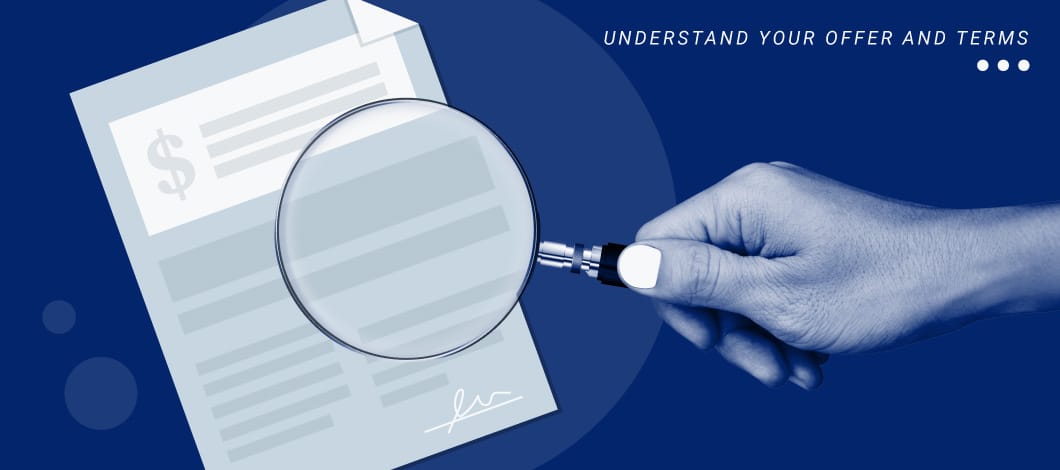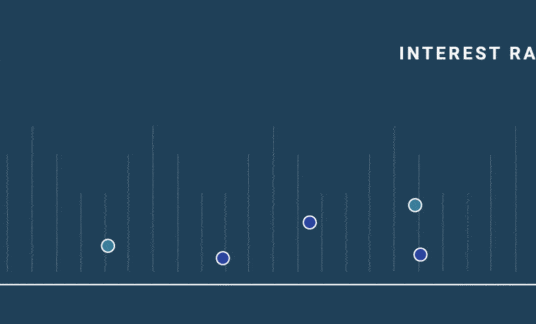Did you receive a business loan offer letter? Or have you applied for financing and received a preapproval? How do you know which funding option is right for you? Here are 6 essential tips to follow when you’re evaluating business loan offers for your company.
1. Understand Your Offer and Terms
When comparing small business loan offers, start by finding out your principal, interest rate and loan terms. Before deciding which loan offer is right for you, consider how much you really need to borrow. Too much and you could be on the hook paying interest on funds you don’t need. Too little and you may consider taking out another loan to make up the difference.
Here are additional points to clarify:
- How much are prospective lenders willing to fund you?
- Are you required to provide a down payment? If so, what percentage will you be required to put down?
- What type of loan or financing have you been offered? (e.g., SBA loan, business line of credit, advance)
- How long will you be required to make payments?
- Is your interest rate fixed or variable? With a fixed rate, your payments won’t change. However, with a variable rate, your payments will fluctuate because they’re tied to a benchmark interest rate, such as the prime rate, that changes over the course of the loan.
- Are lenders quoting you a factor rate? Factor rates are expressed as a decimal figure (e.g., 1.2) and associated with alternative financing, such as merchant cash advances and accounts receivable financing.
- If you’ve been quoted a factor rate, you can calculate your total repayment amount by taking the amount you’re advanced and multiplying it by your factor rate. For instance, $10,000 multiplied by a 1.2 factor rate would give you a total repayment of $12,000.
- Are lenders quoting you an annual percentage rate (APR)? This is a percentage that represents the annual cost for the loan over the repayment term. This is different from interest rates – APR includes the interest rate and other financing fees.
2. Be Clear on Your Required Payments and Charges
In addition to the interest rate you’ve been quoted, other fees will likely apply. These could include origination fees, annual charges and maintenance fees.
While your lender should be able to provide you with your total repayment amount, there are online tools that can help you calculate the cost of financing and provide you with payment installment estimates.
Also, understand your payment schedule and any penalties that could be imposed. Find out the following:
- How much are your payments?
- When are your payments due?
- Will you have daily, weekly or monthly payments?
- Will you need to set up automated payments?
- Are there any penalties for prepayment? (And, conversely, are there any benefits for prepayment?)
- Are there any fees (application, origination, processing, packaging, referral, guaranty, draw, late payment, etc.)?
3. Evaluate the Loan’s ROI
Another way to compare different financing products and rates side by side is to evaluate the return on investment from your business loan.
Consider the cost of the loan, including interest rate and lender fees. Then compare that amount to the profit you’ll generate from the use of the funds.
For instance, think about the interest rate you’ll be charged and what that means for your total cost of financing over the term. Then compare that to what you’re planning to use the funds for (e.g., bulk inventory purchase) and the profit you can expect to generate from that investment.
Understanding the ROI of a loan offer can help you decide which financing offer is best for your business.
4. Check If You Have an Unsecured or a Secured Loan Offer
Some lenders require you to pledge assets in order to secure financing approval. These assets, referred to as collateral, can be equipment, invoices, vehicles and more. Be sure to ask your lender whether you’ll need to offer some sort of collateral in order to be financed.
Keep in mind, loans secured by collateral often have more competitive interest rates and longer repayment windows compared to unsecured loans.
Many lenders could also require you to provide a personal guarantee before you’re granted funding. This means that if you can’t repay your debt, your lender could hold you personally liable for the losses. The Small Business Administration (SBA), for instance, requires any person who owns 20% or more of a business to provide an unlimited personal guarantee for SBA-backed loans.
While these factors shouldn’t necessarily stop you from accepting a loan offer, they are aspects you should understand before you sign on the dotted line.

5. Consider the Timelines
Is speed your top concern, or do you have time on your side? These are factors to consider whether you’re in a cash crunch and need funds fast, or you’re looking to invest in a long-term venture.
Keep in mind, with certain lenders, applications can take a few weeks to months to be approved and funded. Also, you might not be approved for the loan amount you initially requested, but some lenders may come back with a counter-offer loan, which could affect your timeline.
While conventional banks offer competitive rates and terms, they might require a lot of financial documentation before they consider providing you with a loan offer. For instance, you might be required to submit profit-and-loss statements, bank statements, tax returns, a business plan and more.
In contrast, many alternative lenders have quick online applications and require only a few months of bank statements if you meet their requirements for a minimum credit score, revenue and time in business. In many cases, these online lenders can provide funding within a day. In exchange for speed and convenience, you’ll likely see shorter repayment periods and less competitive rates.
6. Research Your Lender
As with any major financial decision, be sure to do your due diligence. One helpful resource is the Better Business Bureau (BBB). Visit the BBB’s website and search lenders by name. The BBB will let you know the company’s rating with a letter grade, A+ being the best, F being the worst. You can also see any consumer complaints submitted to the BBB.
Also search for a company online and see what borrowers are saying on other rating platforms, such as Trustpilot and Google Reviews. The lender’s reputation on the web can provide valuable insight. In addition, consider how long a company has been in business.











